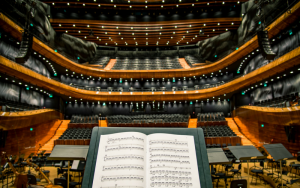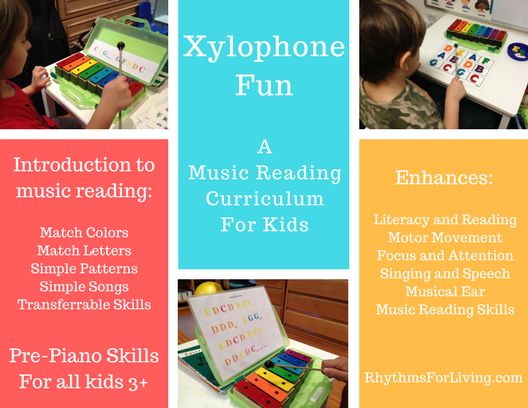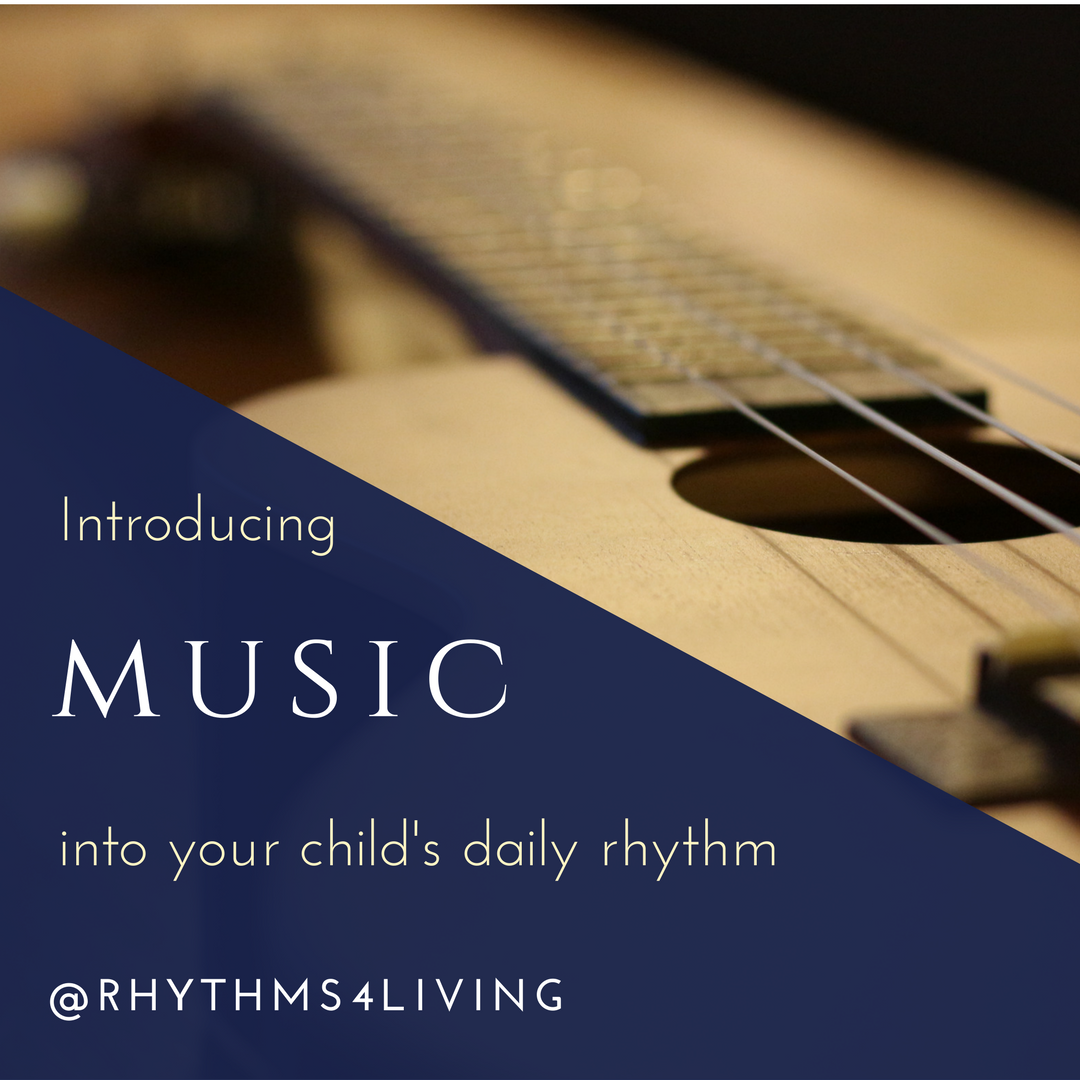 When and how to start layering music into your child’s daily rhythm
When and how to start layering music into your child’s daily rhythm
Many parents would like to include music in their child’s daily rhythm but are not sure when or how to do so. Here are a few insights I’d like to offer you based off of common questions I receive from parents.
- What kind of music can I play in our house for my children?
This is a complex question. There isn’t a one-size-fits-all answer to this. Ideally you want to play a variety of music for your children so that they learn to appreciate all kinds of music and sounds. As to how and when to introduce music into your child’s life, there are several things to consider. First consider the child’s age and their development. Think for a moment about what sounds your child has already been introduced to. A new baby has already been introduced to many sounds while in the womb and probably already likes the music YOU have been listening to. They have also been listening to the mother’s heartbeat, breathing, and blood whooshing around, so these sounds are familiar. They are constant, steady, repetitive sounds. Therefore it is no surprise that babies are calmed and comforted by simple songs that are constant, steady, and repetitive. This is the reason our lullabies and nursery rhymes are simple, rhyming, and often repetitive. That being said, any song can be sung as a lullaby if you sing it slowly and softly. So if it’s the middle of the night and you are tired of singing Twinkle, Twinkle, try your favorite pop or rock or jazz piece.
Toddlers love songs that teach the concepts they are learning. Think animal sounds, counting, numbers and letters, names of animals and family members, directions (up, down, fast, slow). They love to move their bodies and they love to play simple instruments.
Music can be incorporated throughout your day. Kids love to move and will enjoy an occasional dance party in the living room, fun music in the car, or singing songs in the bath. Have a basket of simple percussion instruments ready to pull out for some impromptu music making. Have CDs or MP3s of your kids favorite tunes for the car. Make up songs while playing with water in the bath. Sing a song while washing hands or getting dressed or changing diapers. In our house we sing all the time about whatever we are doing.
Its important to introduce your children to various types of music. Put your favorite tunes on so they can see how you love and respond to music. Get some fun kids music that even parents like (yes it does exist!). Find songs that are upbeat and make you want to dance. Find songs that are slow and relaxing or tell a story and incorporate it into your nap or bedtime routine. Have instrumental music playing while they are coloring, painting, or playing with play-dough. Find books that teach educational concepts that are sing-along-books where you sing the book instead of read it (Barefoot Books are great). Find music from other cultures and play a variety in the car (Putamayo kids albums are wonderful). My only recommendation of what not to play is anything with profanity or inappropriate topics. Again, consider their age and developmental level.
- What age do you recommend I start piano lessons for my child?
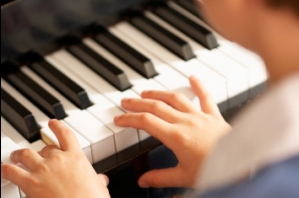 I typically have not started children in piano lessons until about age 5. At this age children are able to sit and focus for a longer length of time and they have begun reading which helps with reading music. However I regularly introduce the basics of music reading at age 3. I do this through fun games with instrument play and visual aids. I also created a curriculum for introducing young children to music reading. It is called Xylophone Fun and utilizes visual aids, simple song patterns, and a xylophone or desk bells. (For more info on the specific instruments which can be used with this curriculum visit rhythmsforliving.com/ebooks). Children first match the colors of the cards to the colors of the xylophone/bells. The colors are matched to specific letters (or notes) and soon the child is matching the xylophone/bells by letter as well. Next they are introduced to simple patterns using the colored letters. And finally they are able to read simple, familiar songs written with the colored letters. The lyrics to the songs are an additional step added to the more complicated volumes to encourage not only playing the songs but singing along as well.
I typically have not started children in piano lessons until about age 5. At this age children are able to sit and focus for a longer length of time and they have begun reading which helps with reading music. However I regularly introduce the basics of music reading at age 3. I do this through fun games with instrument play and visual aids. I also created a curriculum for introducing young children to music reading. It is called Xylophone Fun and utilizes visual aids, simple song patterns, and a xylophone or desk bells. (For more info on the specific instruments which can be used with this curriculum visit rhythmsforliving.com/ebooks). Children first match the colors of the cards to the colors of the xylophone/bells. The colors are matched to specific letters (or notes) and soon the child is matching the xylophone/bells by letter as well. Next they are introduced to simple patterns using the colored letters. And finally they are able to read simple, familiar songs written with the colored letters. The lyrics to the songs are an additional step added to the more complicated volumes to encourage not only playing the songs but singing along as well.
Xylophone Fun is a great way to introduce music reading to a child starting at age 3. This will get them excited about reading and playing music and prep them for more formal piano lessons closer to age 5. The great thing about Xylophone Fun is kids as young as 3 can be introduced to music reading but older children can also learn it quickly and have a fun way to play familiar songs and even start some songwriting of their own. This curriculum is also great for introducing music reading to children with special needs as it is visual and basic and builds on the skills learned in each volume.
- What age do you recommend I start instrument lessons (other than piano) for my child?
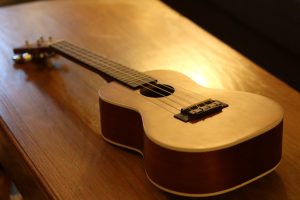 This tends to be a cultural thing but is really based on the child’s readiness. Many Asian cultures have their children learning piano and violin at ages 2-3. American schools tend to begin offering band and individual instruments closer to middle school. It really depends on the child, their developmental level, and their interest level. Many local music schools will offer Instrument Days where they invite kids to come and discover various instruments to see what peaks their interest. They can handle them, learn about them, and hear how they sound. If a child shows a great interest in learning an instrument and is willing to commit to practicing several times a week then they are ready to start. The key to learning an instrument is practice and the most difficult part of music lessons is the commitment to practicing. That being said, it is a partnership between the child, the parent, and the teacher. The child needs to be willing and interested. The parent needs to be consistent in helping the child remember to practice, and offer encouragement and guidance when the child is struggling. The teacher will need to also offer encouragement, continue to offer different techniques until they find what works best for the student and their individual needs, and guide the parents in how to help at home. In my opinion it needs to be something that the family commits to doing for a certain period of time. There will be times when the child gets frustrated or finds it difficult or doesn’t feel like making the effort that day, but if the family has decided ahead of time how long they will continue the lessons (with the input from the teacher) then they can remind each other that they are going to keep practicing and attending lessons until its time to reevaluate. At that time they can decide if the child would like to continue that instrument or try a different instrument or try something new altogether. Commitment is such an important skill for the child to learn and will help them in their adulthood.
This tends to be a cultural thing but is really based on the child’s readiness. Many Asian cultures have their children learning piano and violin at ages 2-3. American schools tend to begin offering band and individual instruments closer to middle school. It really depends on the child, their developmental level, and their interest level. Many local music schools will offer Instrument Days where they invite kids to come and discover various instruments to see what peaks their interest. They can handle them, learn about them, and hear how they sound. If a child shows a great interest in learning an instrument and is willing to commit to practicing several times a week then they are ready to start. The key to learning an instrument is practice and the most difficult part of music lessons is the commitment to practicing. That being said, it is a partnership between the child, the parent, and the teacher. The child needs to be willing and interested. The parent needs to be consistent in helping the child remember to practice, and offer encouragement and guidance when the child is struggling. The teacher will need to also offer encouragement, continue to offer different techniques until they find what works best for the student and their individual needs, and guide the parents in how to help at home. In my opinion it needs to be something that the family commits to doing for a certain period of time. There will be times when the child gets frustrated or finds it difficult or doesn’t feel like making the effort that day, but if the family has decided ahead of time how long they will continue the lessons (with the input from the teacher) then they can remind each other that they are going to keep practicing and attending lessons until its time to reevaluate. At that time they can decide if the child would like to continue that instrument or try a different instrument or try something new altogether. Commitment is such an important skill for the child to learn and will help them in their adulthood.
- If I homeschool, how can I teach my child music appreciation?
Great question! There are many resources for teaching music appreciation. The first thing is just teaching your child to love music. We have discussed already many ways to do this. Offer a variety of music (different instruments, genres, cultures, etc) so that they learn to hear lots of different sounds and types of music. Instead of asking them if they liked a piece of music, ask them thoughtful questions like, “How did that song make you feel?”, “What instruments did you hear in that piece?”, “Did that piece make you think of anything?” (perhaps an image or story came to mind), “How was it different from the last piece of music we listened to?”.
Having children draw while listening to music is a great tool. You can guide them by saying, “Draw to the music. If it sounds fast color fast, if its sounds swirly draw swirls, if it sounds jumpy draw spikes or zigzags.” You can also say, “Draw a picture of what the music makes you think about”. This is open-ended and leaves them up to their imaginations. You can also ask them to think about the feelings provoked by the music and find colors that match that feeling or draw images that reflect that feeling.
Take your children to local concerts (schools, communities, churches, parks, etc). See what music appreciation classes are offered by your library. Find a local music school that offers early childhood music classes that are groups for babies, toddlers, and young children. Expose them to a variety of music whenever you can. It doesn’t always have to be pre-planned. Look for music where you go and think about how to incorporate music into your day.
- Do you have a music curriculum you recommend for Elementary, Middle School, and High School students?
There are a variety of curriculum and resources for teaching music. A few great places to find music to fit your needs would be West Music, Alfred Music and Alfred Expressions Music Curriculum, and Christianbook.com which offers curriculum for homeschooling.
Also be sure to check out Xylophone Fun Curriculum to introduce basic music reading skills, in addition to enhancing cognitive and literacy skills. Its a great homeschool tool!
